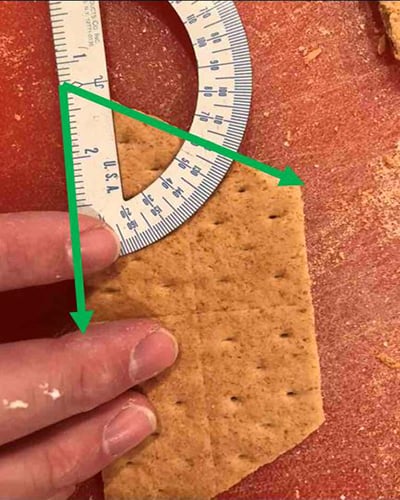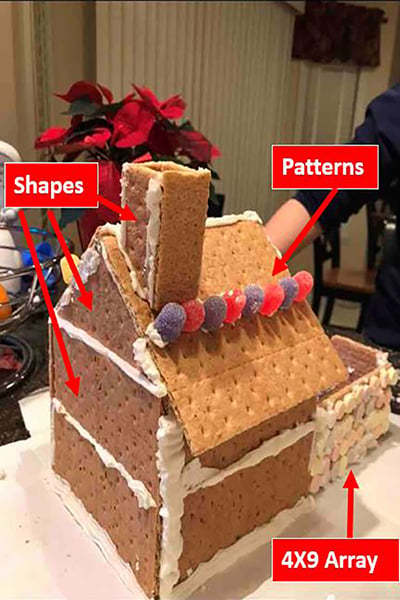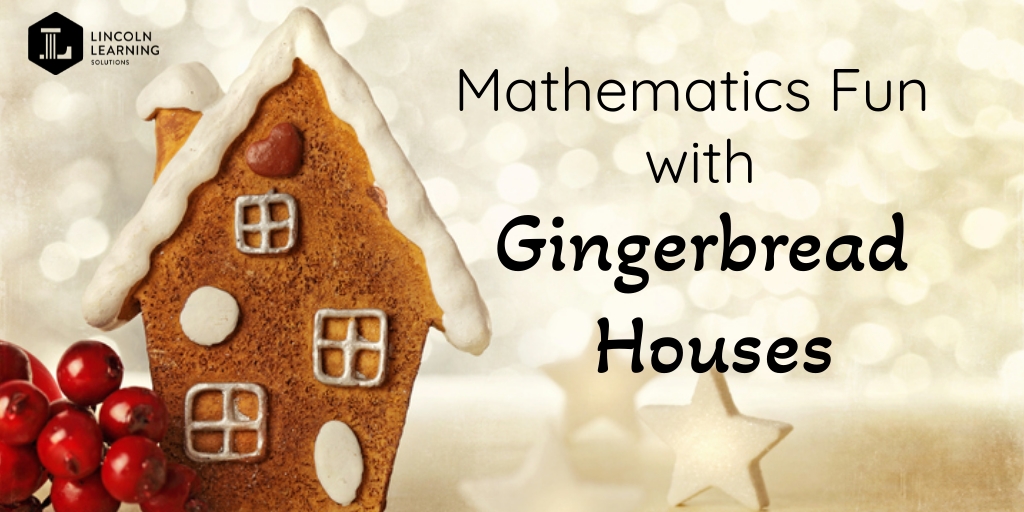Putting together a well-built and appealing gingerbread house requires creativity, as well as engineering skills. Moreover, building gingerbread houses naturally lends itself to reinforcing many math and STEAM concepts.
Construction Shortcuts
If you don’t have a lot of time, patience, or desire for designing and baking your own gingerbread house, use the following two shortcuts to take the stress out of constructing a house from scratch. These building methods will give you more time to focus on all the fun parts, like eating candy, decorating the house, and— of course—applying mathematics!
1. Use empty milk cartons, cereal boxes, or other cardboard boxes to build the structure. Cover the cardboard with graham crackers or pretzels to create the exterior. Use royal icing “glue” to affix the graham crackers to the cardboard. Work in small sections to give the icing glue a chance to dry. When the glue is dry, decorate your house!
2. Use graham crackers to create a gingerbread house structure. You can assemble the walls of the house using the royal icing glue. Let the pieces dry before attaching the roof. If you want to build a fancier house out of graham crackers, check out Charlene Dy’s video from MyRecipes.
Connect Math and Gingerbread Houses
You can incorporate math skills throughout the purchasing, building, and displaying processes.
Money
Young kids can identify the bills and coins needed to purchase items used for making and decorating the gingerbread house. Older elementary-age children can add decimal values to calculate the total cost of the supplies. Middle school children can calculate the amount of change given if the items were purchased using a specific bill.
Cost Analysis
Have middle school and high school children calculate the unit price for graham cracker rectangles, pieces of candy, icing glue, and the other supplies. Older children can calculate the value of their house and a selling price that yields a percentage profit, such as 10, 20, or 40.
Measurements and Estimation
While making the icing glue, kids can measure ingredients, double the recipe, and estimate amounts for desirable consistencies. Discuss measuring dry ingredients versus measuring wet ingredients, stressing units, such as teaspoons, cups, and ounces.
When the houses are complete, children can measure the length, width, and height of the house. Elementary-age kids can measure the dimensions, using centimeter cubes, while older elementary children can measure with a ruler to the nearest half inch or the nearest centimeter.
Middle school children can measure with more precision. High school kids can measure to the nearest 1/16 inch or millimeter. You can even use a measuring app on a mobile device!

Geometry
To incorporate geometry concepts into your gingerbread house project, have your children calculate the surface area of the house. Older children can measure using a ruler and apply surface area formulas. Younger children can approximate the area by counting the number of graham cracker rectangles in the house. Preschool-age children can identify geometric shapes in the house.

Scale Factors
Middle and high school kids can approximate a scale factor for their building, given that a real-life, single story building is approximately 15 feet (or 4.5 meters) tall.
There are so many ways to incorporate mathematics into building gingerbread houses while having fun and spending quality time together. What are some other ways you connect gingerbread houses to mathematics concepts?
Leave your ideas in the comments.



